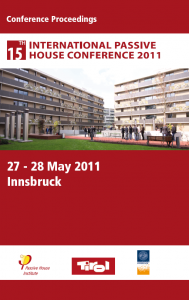 In Australia, according to an item by Hedley Thomas in ‘The Australian’ the handmade mudbrick — natural subsoil mixed with straw and water, and dried by the sun — symbolises Earth’s sustainability, green values and a low carbon footprint. From hippies putting up bush huts, to the well-off building impressive mansions, most agree on the insulation quality and energy efficiency of mudbrick. But now architects and others in the earth building industry, are at their wits’ end. Some are on the verge of admitting defeat to federal and state bureaucracies, which do not recognise the environmental value of the mudbrick. (more…) In Australia, according to an item by Hedley Thomas in ‘The Australian’ the handmade mudbrick — natural subsoil mixed with straw and water, and dried by the sun — symbolises Earth’s sustainability, green values and a low carbon footprint. From hippies putting up bush huts, to the well-off building impressive mansions, most agree on the insulation quality and energy efficiency of mudbrick. But now architects and others in the earth building industry, are at their wits’ end. Some are on the verge of admitting defeat to federal and state bureaucracies, which do not recognise the environmental value of the mudbrick. (more…) |
The Best Green Home News
Credit to: http://www.passiv.de/
scale: 642 pages
- 78 technical contribution in 16 working groups
- 29 Posterbeiträge
- 96 exhibitor
- for a nominal fee of 70,- Euro + post and package.
- Index
online ordering - http://www.passiv.de/07_eng/index_e.html
The First Active House in Russia is designed to set a new standard for residential house construction in Russia. The house design is based on the Active House principles.
Energy
The First Active House in Russia exploits a variety of energy sources, which are integrated in the overall design. The features contributing towards a positive energy balance include a highly effective heat pump, thermal solar collectors for production of hot water and floor heating, and a PV solar cell system for generating electricity. (more…)

The beach might not be a turtle egg-laying site for much longer
Credit to: http://www.newscientist.com/
by Catherine Brahic, La Escobilla, Mexico
THE egg is exactly the same shape, size and colour as a ping-pong ball, but soft and covered in a thin, glistening fluid. Just seconds ago it was dumped into a hole in the sand by a female olive ridley sea turtle.
It’s midnight on La Escobilla beach on Mexico’s Pacific coast, where two biologists and I squat near the solitary turtle. She’s one of the stragglers; last week, some 50,000 females swam in to lay their eggs, a phenomenon known as an arribada. The beach plays host to several arribadas each year. In 2007, 1.4 million nests were dug in this 15-kilometre stretch of sand, making it a contender for the largest sea-turtle nesting site in the world. (more…)
Credit to: http://www.az-web.de/
Baesweiler: This school is still powerfully built. The administration wing has been completely renovated, the work on section III and IV relate to the Education Centre and the new cafeteria nearing completion.
Is still work to be done on scientific tract. Last is then restored to the gym. The school is currently being renovated to Baesweiler Passive House – a nationwide, unique and yet so highly regarded and award-winning project. (more…)
Source: http://pubs.acs.org/
By Bethany Halford
 Liao Yusheng
Liao Yusheng
TEMPLE OF NANOSCIENCE Rome’s Dio Padre Misericordioso Church, also known as the Jubilee Church, retains its bright white color because of nanostructured titanium dioxide.
With its soaring concrete sails reaching high into the sky, the Dio Padre Misericordioso Church, just east of central Rome, beckons religious and architectural devotees alike. The structure is also something of a temple to nanoscience—for it retains its bright white hue thanks to the presence of nanostructured titanium dioxide particles embedded within the cement binder that was used to make its concrete walls.
Completed in 2003, the church, also known as the Jubilee Church, is a flagship when it comes to the use of nanotechnology in construction. But there are more humble examples, too. Whether it’s in steel, concrete, or windows, nanotechnology is finding a growing number of applications in the construction industry, where it promises to make structures that last for centuries and look as clean as the day they were built.
One only has to look at the Jubilee Church to see why it is the foremost example of what nanotechnology has to offer the construction industry. It was designed by Richard Meier, an American architect with a reputation for creating bright white structures that he wants to stay that way. So far, the concrete shows no signs of darkening. Italcementi, the company that supplied the material for the church, checks it each year for signs that its white color is still as bright as the day it was cast.
Nanostructured TiO2 particles theoretically will keep the concrete white forever, even in smoggy Rome, says Luigi Cassar, one of the material’s inventors. Titanium dioxide, known for its snowy white hue, is used as a pigment in paint and food coloring. But it has self-cleaning properties as well. When ultraviolet light strikes the anatase form of TiO2, it excites the material so that it becomes a catalyst for oxidizing organic grime. (more…)

Although roof-mounted photovoltaic panels may not be a common sight yet in the West, the technology is really heating up in Asia – specifically in Bangladesh. According to local officials, the number of solar-powered households in the Asian nation now amounts to over one million. Under-investment in the country’s infrastructure means that the country’s power plants only generate around 4,700 megawatts of electricity a day against a demand of 6,000 megawatts, so some 60 percent of Bangladesh’s 150 million people have no access to mains electricity. As a result, the power-hungry, fair-weathered country has exhibited the fastest expansion of solar technology in the world. (more…)



